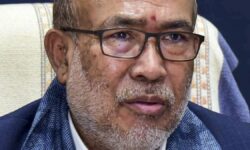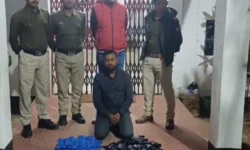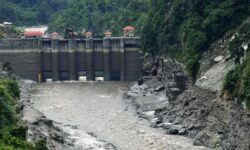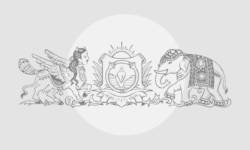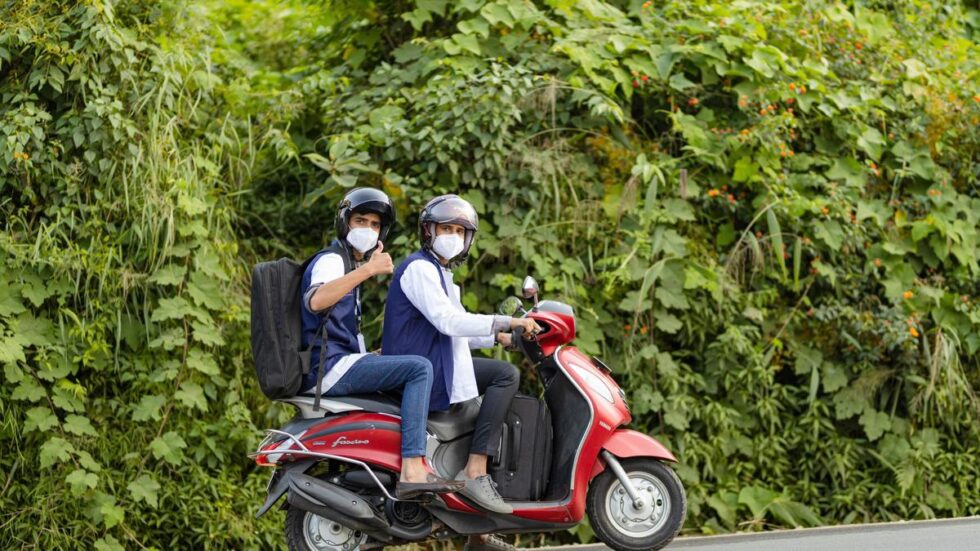
Driving through a multitude of national highways etched onto the plateau of Meghalaya, it is easy to miss Pahamsyiem village in Ri Bhoi district. With a population of approximately 2,000 people, the village almost hides itself among the lush green of this subtropical temperate climate State.
Pahamsyiem is one of the 7,000 villages scattered across the 22,429 km of Meghalaya, with an estimated population of 39.39 lakh, of which 85.9% is tribal, as per the government.
The smooth, tarred Nongpoh highway slowly turns into Pahamsyiem village. Here, in his traditional-healing clinic Elington Syiemsad, 41, is too rushed to greet anyone. There is a steady stream of patients this Wednesday morning. The white-washed clinic with wooden furniture and green curtains has several bottles of traditional herbs arranged at the entrance.
“This is my daily patient load,’’ he says, barely able to look up from his prescription pad, even as an elderly lady who had reported in with fever complains about her 40-minute wait. Syiemsad writes out her symptoms and probes for more.
“How often do you have a fever? How is your appetite? Is there a persistent cough or weight loss? Is there tobacco or alcohol use? Do you or any of your family members have a history of tuberculosis (TB)?” The healer is gentle, giving her time to respond. He records every answer on his pad and then asks the same questions again, to confirm the answers.
His patience with the woman isn’t taken well by those waiting at the traditional healing clinic. Most have had to forgo a day’s wages to come here. Their sickness adds to their annoyance.
“That extra five minutes with any patient to ask them about TB is an important link in the State’s ‘Stop TB’ campaign. Most patients aren’t even aware that they could be TB positive. Getting tested for TB is the most aggressive approach to tackle and eliminate the disease,’’ he explains.
Syiemsad, who has been practising traditional medicine for 19 years now, is among the 1,227 State-trained traditional healers, Meghalaya’s foot soldiers in the battle against TB. The State is among the first in the country to employ tribal healers in its TB control programme. The aim is to make in-roads into the dense tribal population in the State, where the first point of contact for ailments is most often a traditional healer.
India accounts for an estimated 26% of global TB cases and deaths. Nationwide, under the National Tuberculosis Elimination Programme (NTEP), the incidence rate of TB cases has dropped by nearly 17.7% — from 237 cases per 1 lakh people in 2015 to 195 in 2023.
The north-eastern States of India, excluding Assam, exhibit a heavy burden of TB, with a reported prevalence of 497 cases per 100,000 population. Under Meghalaya’s TB control programme 4,573 TB cases were notified in 2024.
India’s goal to eliminate TB by 2025 is one of the world’s most ambitious health missions. Under the NTEP, India has strengthened its TB response with diagnostics, policies, private sector partnerships, and a patient-first approach, say officials. As part of this mission, the Central government started its 100-day TB Mukt Bharat Abhiyaan, in December 2024.
Union Health Minister J.P. Nadda, while announcing the completion of the 100 days early this week, said that under the 100-day programme, 12.97 crore people were screened for TB and over 7.19 lakh TB patients notified across India. Approximately 2.85 lakh of the notified patients were asymptomatic. Under this, up to 867 patients have tested positive in Meghalaya.
Being a bridge
So far, 625 villages in Meghalaya, one of India’s seven sisters in the north-east, have been declared TB free. With Assam to the north and east, and Bangladesh to the south and west, it is known for its hilly terrain. The State had been battling a TB death rate that hadn’t seen any significant fall since 2015, remaining at 5-6%. Looking at a local solution, officials say, has resulted in a fall in death rates to 4% since the project of integrating traditional healers was executed in 2024.
Meghalaya has other health challenges, including malnutrition, particularly among children under five. There are high rates of stunting, wasting, and underweight children, as reported in the National Family Health Survey (NFHS-5).
Poor nutrition can impair the immune system’s ability to fight infections, including TB. Other risk factors include people living with HIV and diabetes; those on certain medication, such as the ones used for organ transplant or cancer treatment, where the immune system is suppressed. Other conditions that make people vulnerable are poverty, cramped unhygienic living conditions, and substance abuse.
So far, the healers across this land-locked State have referred 302 cases, of which six have tested positive for TB. The State provides a cash incentive of ₹500 for each positive case that the healers help track.
“Training these traditional healers to identify signs and early symptoms of TB has been a game changer for the State. We have been able to reach areas that were impenetrable,’’ says Abhilash Baranwal, Deputy Commissioner in Ri Bhoi district. He adds that the trainers have a three-pronged approach: they ensure that healers have the capacity to educate people about TB, they help patients adhere to their treatment, and they work with doctors for better care. This patient-first approach helps in de-stigmatisation too, he says.
Stopping TB
Dr. Amica Joan Rynjah, assistant programme officer, NTEP, Meghalaya, says, “The State TB programme is forced to navigate Meghalaya’s hilly terrain, poor connectivity, health infrastructure and diagnostic gaps.” She adds that under the Central government’s 100-day TB Elimination Campaign, the State government implemented the programme in five districts where the burden of the disease is high: East Khasi Hills, Ri Bhoi, East Garo Hills, West Garo hills, and South Garo hills.
Hose Shadap, 58, a traditional healer from Umpohwin village, Bhoi Rymsong block, says that most tribal people believe that TB is not an easy disease to cure. “There is still fear associated with it. Testing is now the first line of defence. Our mandate is clear: we screen and ensure maximum testing, especially for people coming in from vulnerable populations, including pregnant women, substance abusers, and those who have a history of TB,” Shadap says.
This has resulted in a 126% surge in presumptive TB testing in the State, officials say. Most people are worried about the financial loss that TB brings and the stigma associated with the diseases. “Consistent counselling and hand holding works well. Educating people also plays an important role,’’ Shadap adds.
He notes that the State’s TB control programme realised that community engagement is key. “The healthcare machinery in Meghalaya needs people who have influence over the population. As tribal communities, we have our own set of traditions and customs. Most don’t opt for the public health system, and we are their first port of call when they fall ill,’’ he explains.
Treatment attack
TB is one of India’s most infectious diseases. The national TB prevalence survey, released by the Central government this year, indicates that 64% people who showed symptoms did not seek care. Reasons for not going to a doctor included ignoring symptoms, not recognising symptoms, self-treatment, and not having the financial means to seek care.
While TB medicines are free of cost across India, the loss of pay when they go in for treatment is difficult for daily wage labourers.
There is also the cost of the disease. Saima Wazed, regional director for the World Health Organization, South-East Asia, says, “In our South-East Asia region, 30%-80% of TB-affected households experience catastrophic costs.”
An article in The Lancet in October 2023 estimated that for every TB episode, patients across low-income and middle-income countries (LMICs) incurred direct medical costs up to USD 1,253, including direct medical, direct non-medical, and indirect costs.
India now uses the BPaLM regime consisting of a drug combination — Bedaquiline, Pretomanid, Linezo- lid, Moxifloxacin — that has proven to be safe, more effective, and quicker than previous multi- drug-resistant (MDR) TB treatments. While traditional MDR-TB treatments can last up to 20 months with severe side effects, the BPaLM regime cures drug-resistant TB in just six months.
India is also partnering with the private sector, which takes care of over 49% of patients. “State governments are contracting NGOs to facilitate free care in the private sector,’’ says a senior official from the Health Ministry.
Aakaar Kapoor, founder and partner, City Imaging and Clinical Labs, Delhi, says, “Enforcing mandatory accreditations for all diagnostic labs and implementing a triple-layer verification system for TB detection will further strengthen diagnostic accuracy and control efforts.” A triple-layer check refers to the levels at which checks are conducted on the equipment and results.
Meanwhile Syiemsad, who recently referred a patient who has tested positive for TB and earned the State government’s ₹500, says, “TB has the potential to bankrupt a family and destroy lives. Early detection is key to fighting TB. As foot soldiers we are going to fight this to eradication.”
bindu.p@thehindu.co.in
Edited by Sunalini Mathew




